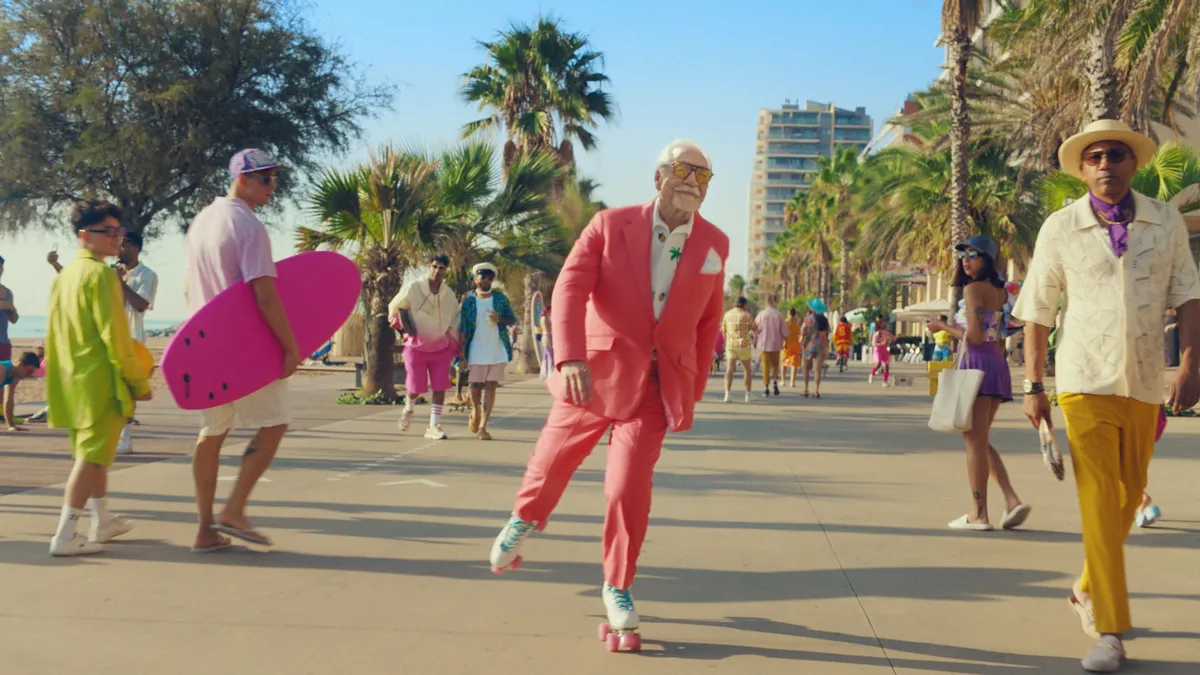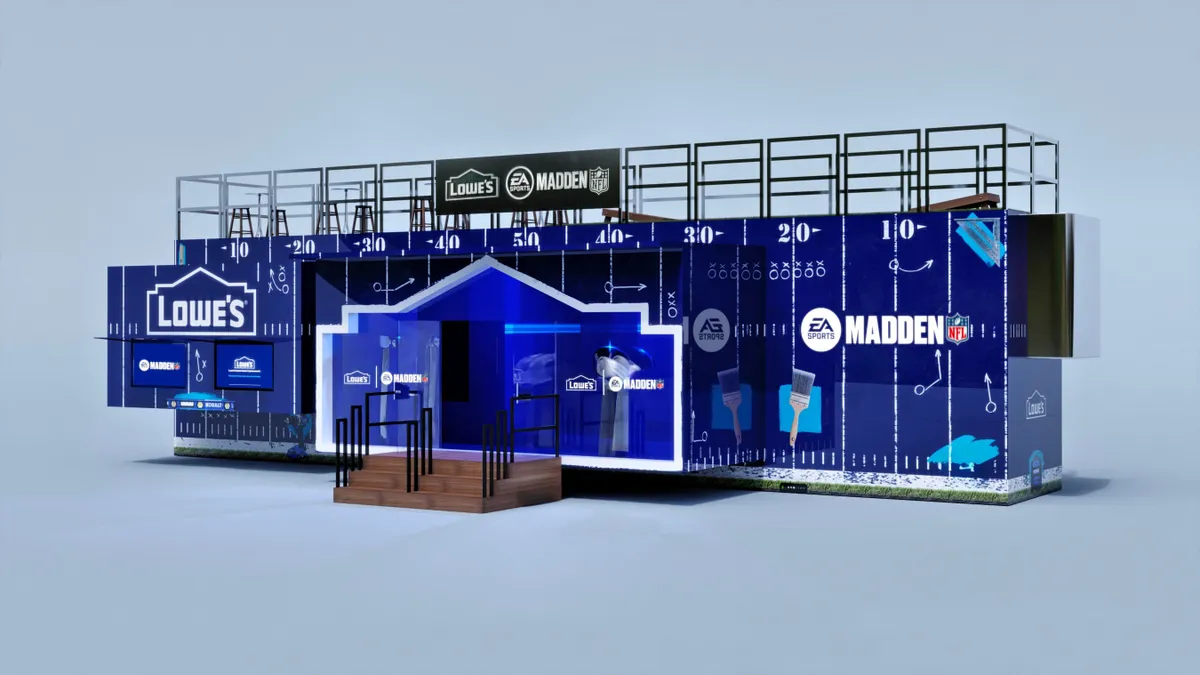As brands seek to stake a claim in the metaverse, marketers must know the risks and lingering issues associated with the emerging space. Issues of safety and inclusivity cannot be overlooked.
To help marketers and developers better understand the risks associated with the metaverse, Tiffany Xingyu Wang helped to establish the Oasis Consortium, a nonprofit that seeks to advance digital sustainability through ethical standards and technology in the metaverse. Boosted by a career in developing trustworthy artificial intelligence, Wang sees brand safety standards like those from the Oasis Consortium as a necessary step toward a fully realized metaverse.
The group released safety guidelines for the metaverse on Jan. 6, 2022, dubbed the Oasis User Safety Standards and designed to set safety guardrails for the next iteration of the web through a framework of five P's: priority, people, product, process and partnership, according to Wang.
"January 6 this year was a date [that] is very meaningful, because one thing I deeply believe is the capitol insurrection last year [was] partially a result of that we didn't put any safety guardrails 15 years ago," she said.
In an interview with Marketing Dive, Wang discussed safety considerations brands must be aware of before investing in the metaverse.
This interview has been edited for clarity and brevity.
MARKETING DIVE: What are some benefits early adopters of the metaverse have been seeing? What are some challenges?
TIFFANY XINGYU WANG: The first thing first is how you define metaverse. Once we define that, it's much easier to understand why some brands decide to enter the metaverse or why certain brands want to take the lead into this whole universe.
What I often say about the metaverse is that it basically transcends the internet of today. It converts the internet of today into a 3D universe, which is more immersive and therefore more engaging and persistent. This creates more touch points for brands and more interoperability, and means more channels within the same so-called metaverse. It is a fantasized version of the universe, so anybody can be anybody.
In other words, the willingness to purchase is also potentially amplified because of the possibilities. So the four aspects — the immersiveness, the persistence, the interoperability and the fantasized version of selves enabled by this universe — can bring huge potential for any brands who want to achieve the holy grail of the amplified lifetime value of their consumers [and] gain visibility of the purchase journey. I think the metaverse definitely presents that potential for brands.
Now, we have to talk about the flip side of that, because the promise that I talked about is a promise. I think all the technology companies, all the platforms, are building what I call the basement of the metaverse. We're building this universe from the ground up, and today we are at the basement level building the groundwork of those promises. The flip side of those attributes is potentially laying down huge risks. The past 15-20 years really led us to what I call the loss of trust in Web2, as over 40% of U.S. internet users have said to be harassed or subjected to hate speech online. There's the safety issue, which is mainly because we didn't have safety guardrails from the get-go in Web2. We have a data issue, the privacy issue. Every 39 seconds, there's a data breach.
And then we have the inclusion issue. Today, facial recognition AI recognizes the wide scheme, the males 34% better than dark-skinned females in many circumstances. We're talking about an era where we don't have safety, privacy and inclusion. Those aspects are completely amplified in Web3. The immersiveness basically amplified exposure, because it's immersive, you feel more, the impact is more major. Persistence really drives the velocity of toxicity because it's persistent all the time. Fantasizing itself is really increased exposure to toxicity, and interoperability actually makes content moderation much harder.
For example, certain brands have a lot of controversies about moderating hate speech and racism online. They don't have enough data to know how to address those. But those platforms in the metaverse, they're completely different use cases of how you moderate toxicity. So, the flip side of this rosy future we paint for brands to go into the metaverse has this risk if we don't address the safety issues right now, right here. We are putting the brands adjacent to potential hate speech and racism issues, which will cause problems.
Many brands seem to think user guidelines will protect them, but that's often not the case. How do brands protect themselves from hate speech and other issues on these emerging platforms?
WANG: You need people who have worked in the space of safety for a long time to understand the impact and challenge of addressing safety. Governance has to start with these experts who have walked the walk. The Consortium is basically a safety advisory board. One way to categorize them is they are web trust and safety leaders who have been there for the past five years, who are building the new platforms and understand how to build safety by design.
You also have a group of folks who have been there for over a decade and have to adapt experience and safety. The second group, they have seen the first incarnation of the web. People who build policies for platforms like Decentraland are often isolated from the people who build the brand. But the policy is a reflection of your brand identity. Does Decentraland want to have the brand identity that tolerates Hitler? I'm pretty sure the answer is no. But then why isn't there a policy in place to guide the users and therefore the voters to understand that, because ultimately, you have to be very clear about identity and guides your community toward that direction so they can vote for a future they truly want. I think those standards serve as a guidepost.
The example I gave you was a mistake we made in Web2. All the founders in Web2, nobody wants their platform to be a platform of hate speech. But we didn't think to put that in the community policy or enforcement. As a result, unfortunately, some platforms today are basically associated with a brand of hate speech and racism. I think the message for us is to get those platforms to look at those standards and not make that mistake again. The metaverse opens huge potential for huge risks, but also a huge opportunity for us to make safety no longer an afterthought. I really encourage all Web3 builders to look at the standards and use them before it is too late.
Do you think the metaverse will ever truly come to fruition? What are some potential benefits for brands to get in early on the space?
WANG: Everybody's looking at this crystal ball and wants to find answers and know ahead of time. One thing I do know is that just as many people were skeptical about the internet decades ago. So I think it's to a brand's advantage to think ahead of time about the metaverse. Any brand taking action is doing the right thing because even though we don't know what the metaverse will look like at the end — maybe it won't even be called the metaverse — one thing we do know is that it's in human nature to want to be connected. The pandemic accelerated a future free of physical impediments. The metaverse just turns 2D into 3D.
There are different assumptions about it. We've seen the key players, with deep pockets who even want to own the word "meta," this is the first horse. Then you have the second horse which is all the gaming companies. If you ask those gaming companies, they will tell you that they have been in the metaverse for a long time. They have been immersive through voice or livestreaming forever. They already have a world where they represent themselves through an avatar. The third horse is all the metaverse native companies. A lot of them want an open metaverse. So, we see the three horses are panning out, and we'll see which horse wins the race.
There's no right or wrong answer. I like the idea of open metaverse because it is true to humanity, as people want to be open and nobody wants to be centralized for a lot of the data and identity issues we're seeing with Web2.
I think for the brand, they really want to talk about how you engage with this new medium. I think CMOs need to get more involved in the discord. People need to potentially understand more about NFTs and crypto, the different layers of infrastructure. CMOs need to understand those new terms and how to engage with them and stay ahead of them because marketing and advertising will look quite different in the metaverse.
What horse is your money on?
WANG: As the founder and president of the Oasis Consortium, I like open metaverse. To enable openness, I want horse three to really chart the course and run fast. All the gaming companies in the metaverse are doing a fantastic job of investments in devices and 3D rendering tech, and we need these two horses to enable infrastructure building. But we need the third horse to run fast, because if they don't, it won't be open. My ideal is to help the third horse run very fast, then we actually stand a chance to have an open metaverse. At the same time, I'm very supportive of the first two horses because they do a fantastic job. Gaming companies understand the metaverse so well, and then of course, Meta has deep pockets, which will enable a lot of the technology investments.
Only when [the metaverse is] open will people in this universe be put at the center of decisions. Only when that happens, safety, privacy and inclusion will become a priority. People who ignore safety will pay for it. In other words, the universe that prioritizes safety, privacy and inclusion will have trust, which is the holy grail in Web3.
Do you think marketers are overlooking gaming?
WANG: Gaming companies are not being ignored. They're leading the way for many reasons. Roblox has been the playground for kids under 13 for the longest time. Now it wants to elevate its age group. It already has hundreds of millions of users, so you can't ignore Roblox if you want to catch Gen Zers because they didn't grow up with the social platforms millennials grew up with. They grew up with Roblox.
Gaming companies have the tech to enable gaming design, which if you think about it, the technology that enables 3D rendering for game design can be applied for uses outside of gaming. So you definitely can't ignore gaming companies because they're powering the whole universe building. For example, Epic Games does gaming and social. It has the users who are native internet users. Gamers are familiar with how to get around in the metaverse, as they're the first adopters for a lot of technologies. Epic Games also has the tech to power the rest of the metaverse. So staying very close to the gaming companies is a portal into the metaverse. We've seen some brands already partnering with Roblox or entertainment partnerships with Epic Games.
Marketers want to know their audience and expand. They want to make sure they find the channel market fit. Marketers also want to know the velocity to get to them, how fast they can get to users on that channel. Marketers also must have the data to statistically prove that their investment is marketable.
When you look to the metaverse, the gaming platforms have a lot of Gen Z, so to fulfill your target, you have to start looking there. In terms of a channel, the metaverse is way more engaging, so your conversion is likely faster on those platforms rather than investing in Google search or traditional ads, where marketers don't have access to all the data. Multitouch attribution is so hard because it's spread across different platforms. One one platform like the metaverse, you can know the exact user journey. Of course, data protection and transparency should be in mind. I think marketers have to learn this lesson.























